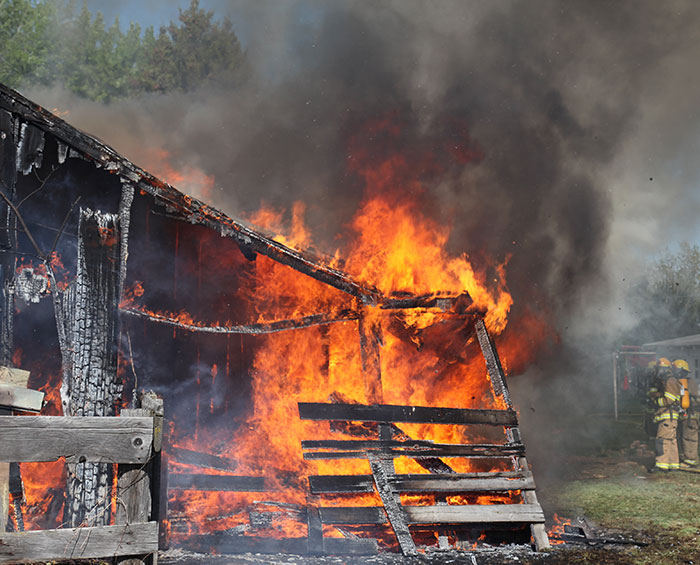
The call to action to prevent hay barn fires is usually made during first cutting, but the risk of hay fires exists throughout the production season. This is especially true as it may be harder for hay to dry down during this time of year. And even if harvest went off without a hitch, hay fires can occur up to six weeks after bales are put into storage.
“Hay that is baled above 20% moisture without using a preservative is at greater risk for fire. The critical moisture content for large bales is even lower,” says Catie Green with Colorado State University.
The area extension agent explains when hay is not dried properly, it will continue to respire and release carbon dioxide after it is baled. The excess moisture in hay bales also creates an ideal environment for microorganisms to multiply. Both of these biological processes generate heat, and in some cases, temperatures can get high enough to cause spontaneous combustion.
“Something to keep in mind as we go into another hay storage season is keeping an eye on the temperature of your haystack,” Green states. “It is possible that hay didn’t get baled at optimal moisture to prevent microbial activity and respiration leading to the warming of bales and, potentially, a hay fire.”
One way to monitor hay is to use a probe designed to measure temperature and moisture; however, Green notes bales are usually hottest in the center and most probes are not long enough to take an accurate reading. If this is the case, drill 3/16-inch holes into a 3/8- to 3/4-inch pipe that is cut to a point and insert the pipe into the bale. Tie the probe to a string and lower it into the pipe so it reaches the middle of the bale.
A less accurate method of measuring hay temperature is to stick an iron pipe in a bale for at least 20 minutes. If the pipe is hot to the touch after it is removed, there is a risk of fire. Either way, Green recommends taking the following actions as bale temperatures rise.
125°F: No action is needed.
150°F: Check bale temperatures twice a day. Unstack bales, if possible, to allow more airflow and reduce heating.
160°F: Check bales every two hours as temperatures continue to rise.
170°F: Hot spots and fire pockets are likely to occur at this temperature. Alert the nearest fire department of a possible hay fire incident and try to eliminate air movement around the bales.
190°F: Remove hot hay with assistance from the fire service. Take caution as hay can burst into flames as it comes into contact with fresh oxygen.
200°F: Fire will most likely occur. Allow only the fire service to remove hot hay.
Heating can create cavities in hay. If bales are unstacked from the top down, Green advises farmers to put planks across the tops of bales to distribute their body weight and limit their risk of falling.

